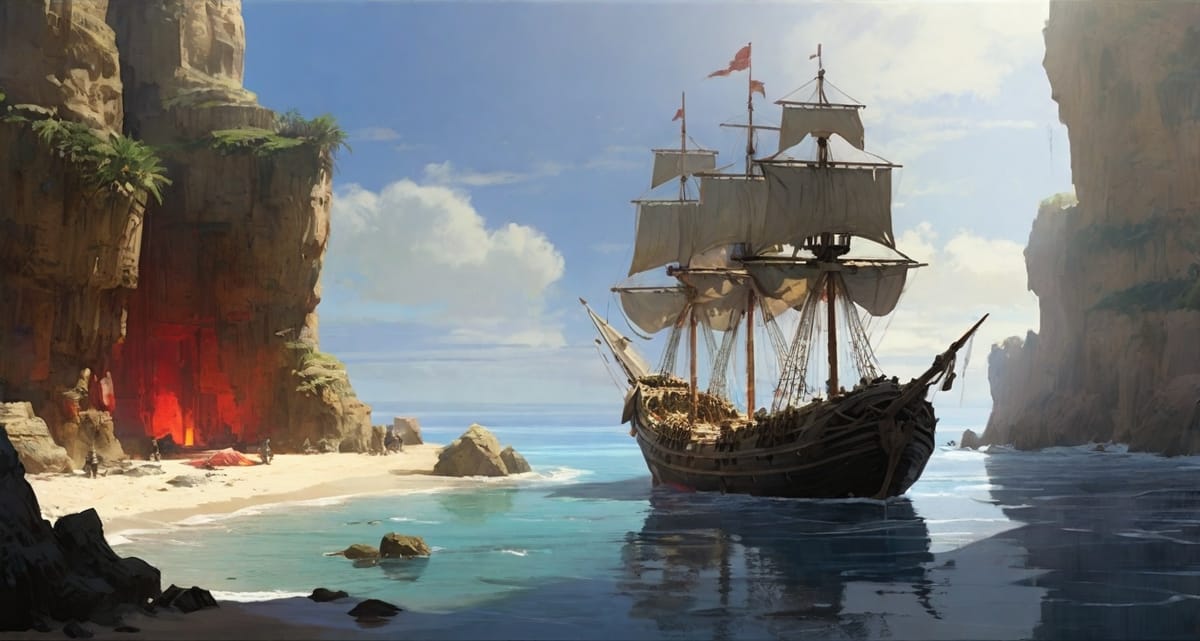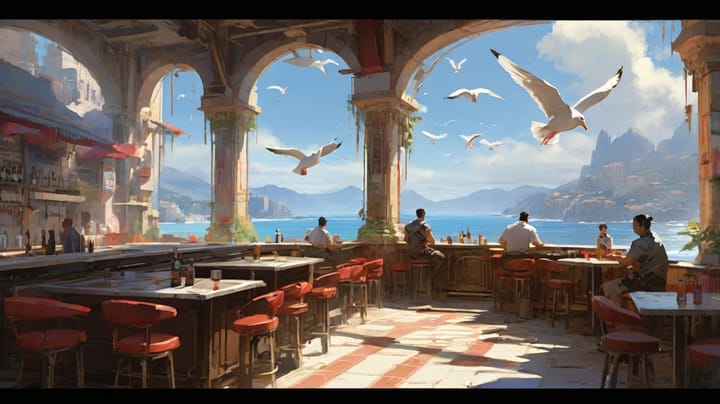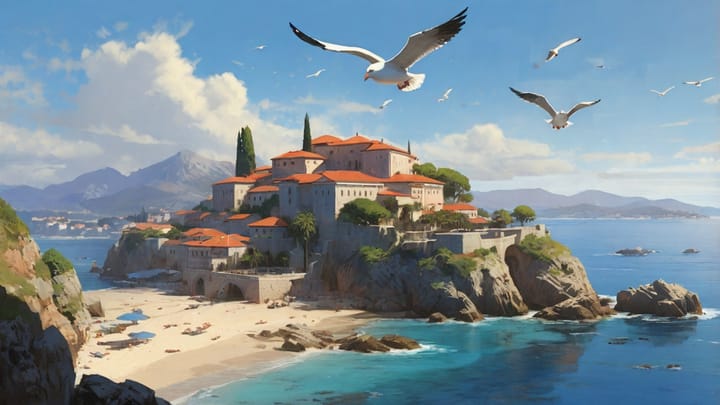They told us the sea would kill us.
That we'd vanish into the mouths of sea serpents, or fall off the edge of the world.
That God did not make oceans for men like us.
But the crown had other ideas.
So we boarded.
It was still dark when I arrived at the docks, breath white in the air, feet numb through worn boots. The ships loomed like beasts of oak and canvas. Seventeen of them. The Marigalante would lead us. The Niña, that old survivor, joined again. Others had names I didn’t recognize—Gallega, San Juan, Cardera. Ropes hissed. Gulls circled like spirits not yet decided.
We left Cádiz on September 25, 1493.
The priest touched our foreheads with holy water. A bell tolled. And in the blur of rope and ritual, I stepped from the world I knew into one whispered about in taverns and temple corners.
The night before the sea took me, I remember my sister brushing sawdust from my coat the night before. She gave me a tiny iron charm. “A relic from Abuela,” she said. “For protection,” she added, tucking it into my hand like a secret.
I joked I’d return with gold enough to roof the whole barrio.
She didn’t laugh. Instead, she said:
"Don’t forget who you are out there."
That line stuck. It rang louder than the bell that sent us to sea.
There's something no map can tell you...
They said this voyage would be different.
The first had found land. And mystery.
This time, we were to build. To stay. To convert. The Crown and Church were no longer curious. They were committed.
But no map could prepare us for the moment the coastline disappeared.
Cádiz—with her salt-stained arches, Moorish tiles, and open skies—became nothing but memory and mist.
And then nothing. Just water. Days of it.
The sea turned colors faster than a prayer. Blue to grey. Grey to black. Men whispered again of dragons. Of cursed stars. We laughed, but not hard.
At night, I listened to wood creak and men dream aloud. Some prayed. Some cried. Some stayed silent. I wrote. Letters I’d never send.
They said we were bringing Christ.
But we carried other things too.
Greed. Fear. Wonder. Hope that something would be different across the water. Maybe not just riches. Maybe a new start. A cleaner soul.
There was a mapmaker aboard, Juan de la Cosa, who said the stars told truer stories than kings. I believed him.
There was also Fray Bernardo Buil, a priest tasked with founding the first church. He spent hours sketching temples in the margins of his Bible.
Even Rodrigo de Jerez was back—the man who brought tales of men blowing smoke like dragons from their mouths. We thought him mad. Now, not so much.
And then, there was this morning...
Calm. Too calm. When even the wind left us.
A man died that day. Fever. We stitched him in sailcloth and gave him to the deep.
No hymns. Just silence.
And then: birds.
A flock passed overhead. Not gulls. Land birds. Bright ones.
We knew then: land was near.
But it wasn’t triumph I felt. It was stillness. A shift. Like something inside me unlatched.
I thought we were chasing gold...
They’ll tell you we sailed for glory.
But between the waves, I saw it:
We were chasing meaning. And that’s far more dangerous.
Even the cruelest man onboard cried once. Quietly. Said the stars made him feel like God was watching.
Maybe the sea does that. Maybe it shows us who we are.
This is what I wrote that night, watching stars dance in water:
To whoever finds this—I don’t know if we’ll find gold or gods or monsters.But something opens in me the farther we get from home.Maybe the edge of the world was never a place. Maybe it’s a mirror.
I write this now not as a hero, nor as a witness to history.
I was no more than salt and skin—one soul among many, bound to a wooden cross floating into myth.
But if you ever stand in Cádiz and hear gulls cry, if you ever walk the docks and smell the old salt in the air, remember this:
We weren’t just crossing oceans.
We were crossing something within.
And some crossings change you forever.
Cádiz was once the edge of the known world.
And beyond it?
Not monsters. Not dragons.
But change.
Behind every voyage is not just geography. But identity, transformation, and the invisible tide of meaning we all search for.
Editor’s Note
This fictionalized narrative is based on real events surrounding Columbus's second voyage to the New World in 1493, which departed from Cádiz, Spain, with 17 ships and over 1,000 people.
It blends the emotional and spiritual landscape of the time with factual details from maritime history. Characters like Juan de la Cosa, Fray Bernardo Buil, and Rodrigo de Jerez were real figures on this historic journey.




